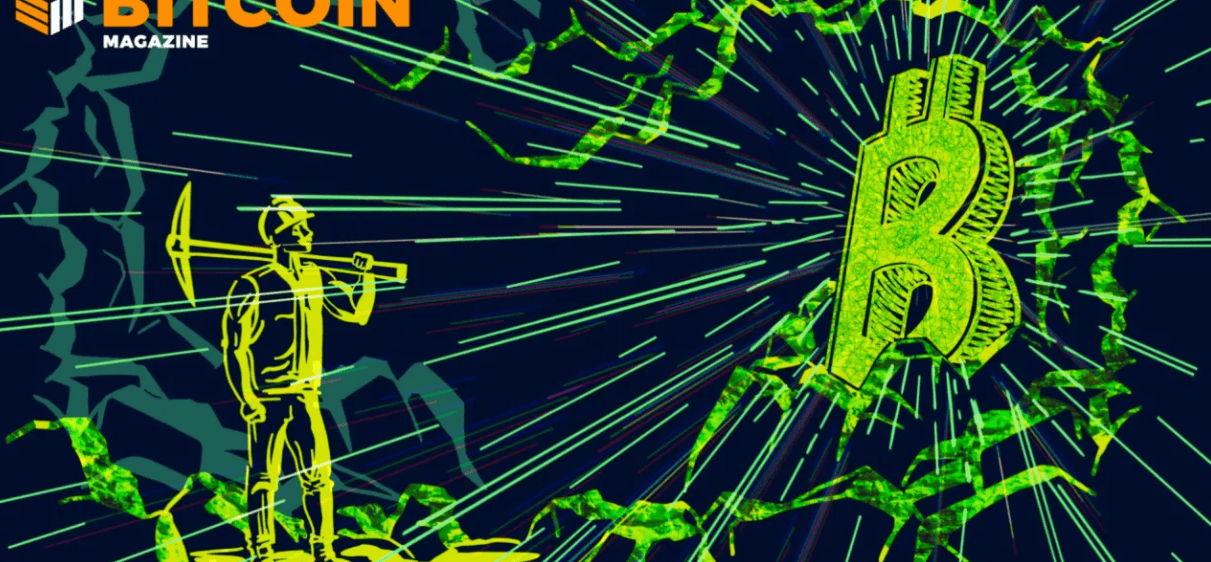Why the Only Viable Form of Consensus is Proof of Work

bitcoinmagazine.com 04 December 2022 02:19, UTC
This is an editorial by Pierre Gildenhuys, co-founder of a social and environmental technology startup in Hong Kong.
Proof-of-work is the consensus mechanism used by the Bitcoin protocol. Basically, this means that some work has to be done to prove that the transactions that take place on the network are valid.
Proof-of-work runs with a dedicated "computer" called an application specific integrated circuit (ASIC), which inputs transaction data, information from the previous block listener, and a random number (random number) to guess the outcome of the hash function. Hash functions are one-way mathematical equations, so it is impossible to calculate the resulting output from publicly visible inputs other than through quick guesswork as in these ASics. The "miners" are the people who operate these machines, who want to increase the number of hashes (or guesses) that their equipment can produce per second, and who want to find the cheapest and most reliable source of energy to make this mining work for them to cover the cost of the machine and earn income to cover their other expenses. Still, Bitcoin is an extremely competitive industry because of its difficulty adjustment: the complexity and difficulty of the hash function increases or decreases according to how many hashes are mined on the network per second, so it takes an average of 10 minutes to discover each new block in the global network.
A block is a collection of transaction data that must be transmitted and added to the chain of all previous blocks on the network, and will only be transmitted and added to this "blockchain" if the answer to the hash function is found. Miners reward miners by charging transaction fees paid by users as well as receiving a block subsidy, which starts at 50 bitcoins but is halved every 210,000 blocks - roughly every four years. (The current block subsidy is 6.25 bitcoins per block.) The Bitcoin protocol has a maximum circulation of 21 million bitcoins, which means the block subsidy will run out around 2140 and all mining incentives will be paid through transaction fees.
Fundamental importance of proof of work:
- There are real costs to producing bitcoins.
- Defending the integrity and accuracy of bitcoin comes at a real cost.
- Bitcoin has an "unforgeable cost," which means that fake bitcoin or fraudulent bitcoin transactions can only be made by redoing all previous expensive proof-of-work at a rate that outpaces all ongoing proof-of-work - working on the network.
The 51% required for any individual, nation-state, or organization to take control of the network and maliciously alter transaction history for their own benefit has become too costly and unworkable.
This is in stark contrast to the proof of stake that serves as the consensus mechanism for many altacoins, digital penny stocks and other Ponzi schemes sold as alternatives to bitcoin.
Equity certificates lock the tokens of the agreement by "mortgaging" or, more simply, making them unspendable. The number of tokens pledged represents your opportunity to verify the trading block. The more tokens pledged, the higher the chance of verifying the transaction, and therefore the more often you will be rewarded.
With this in mind, most altcoins are issued to insiders and development teams before they are publicly available -- thus, the majority of these tokens are owned before outsiders can even begin to acquire or bet on them.
According to a study by Sam Callahan, Ethereum's officially acknowledged pre-mining is around 20% - the lowest of any alcatocin - meaning that since the public offering, these insiders only need to get an extra 31% to change the protocol whichever way suits them. While Bitcoin has a demonstrable 0% pre-mining, the number of bitcoins owned by any individual or group does not alter the protocol in any way, unlike Altcoins. The only way to change the bitcoin protocol is to have a real consensus on 51% of the work done by the network, which has historically proven extremely difficult to achieve, so the merits of Bitcoin will not be compromised until the change is proven to be good for everyone in the network. Studying the "Blocksize War" is a good way to understand this.
Meaning of Proof of Stake:
- Equity proves that there is no real world cost of production.
- It's easy for wealthy individuals, countries and organizations to get a majority stake of 51%, allowing them to change the rules of the deal to benefit themselves.
- The defense of proof-of-stake tokens relies entirely on trust in everyone who has enough capital or enough tokens, and does not change the protocol.
Proof-of-work is a good use of energy because it protects the global currency network in such a way that no one can change the rules or produce more tokens to increase supply, meaning that it becomes financially a suitable currency to hold for a long period of time. Proof of stake is not an adequate substitute for proof of work because it does not address interference by malicious parties anywhere in the world at any time.
Blockchain is not a new development, and financial payment tracks can be developed much faster than any platform using blockchain. Blockchain distributes the entire information about a transaction to thousands of computers around the world, so it is slower than simply distributing a balance from a centralized system. The only reason Bitcoin uses blockchain is because it needs to be truly decentralized. And with the help of proof-of-work, it can prove decentralized. However, since there is no way to ensure decentralization of the proof-of-stake chain, using proof-of-stake Altcoins is essentially putting your trust on a centralized platform that may have malicious intent, So when there are more efficient centralized systems (such as PayPal, Cash App, or other digital payment platforms), the use of a proof of stake system becomes irrelevant.
If you are willing to take the risk that your money could be stopped, reviewed, or confiscated at any time for any reason - or rather that the platform could be exposed as fraudulent or insolvent - then use a centralized system, such as a legacy financial system or a digital payment application. However, the use of equity proves that cryptocurrencies, often centralized Ponzi schemes to enrich their founders, are wasteful because they are meaningless and only take up storage space that could be used for more important data storage in the future.
I would stick with bitcoin, which is secure, immutable, immutable and decentralized, with no single point of failure. Bitcoin is a currency in limited circulation, so the value of bitcoin cannot be stolen by unnecessary supply inflation - as has happened with every fiat currency and most altcoins.
This is a guest post by Pierre Gildenhuys. The views expressed are solely their own and do not necessarily reflect the views of BTC Inc or Bitcoin Magazine.
( Note: This article is sourced from bitcoinmagazine.com, if there is any infringement, please contact the webmaster for deletion immediately.)
Please specify source if reproducedWhy the Only Viable Form of Consensus is Proof of Work | Crypto Mining Resources Navigation | MinerNav















